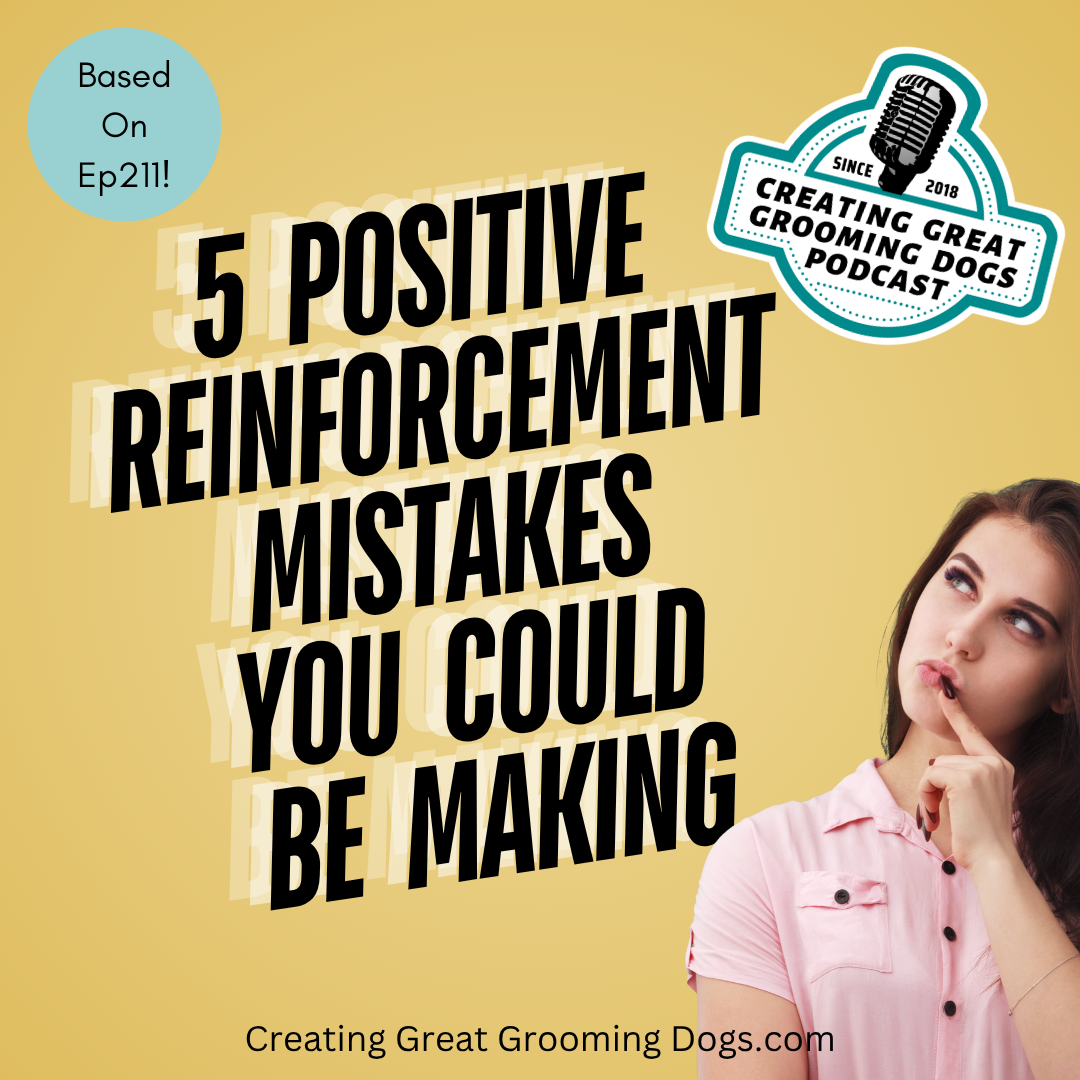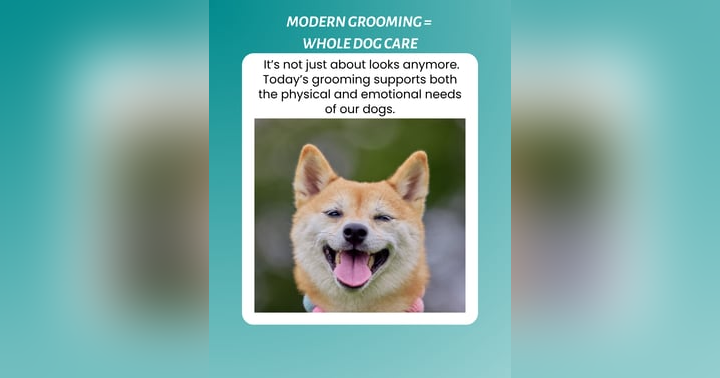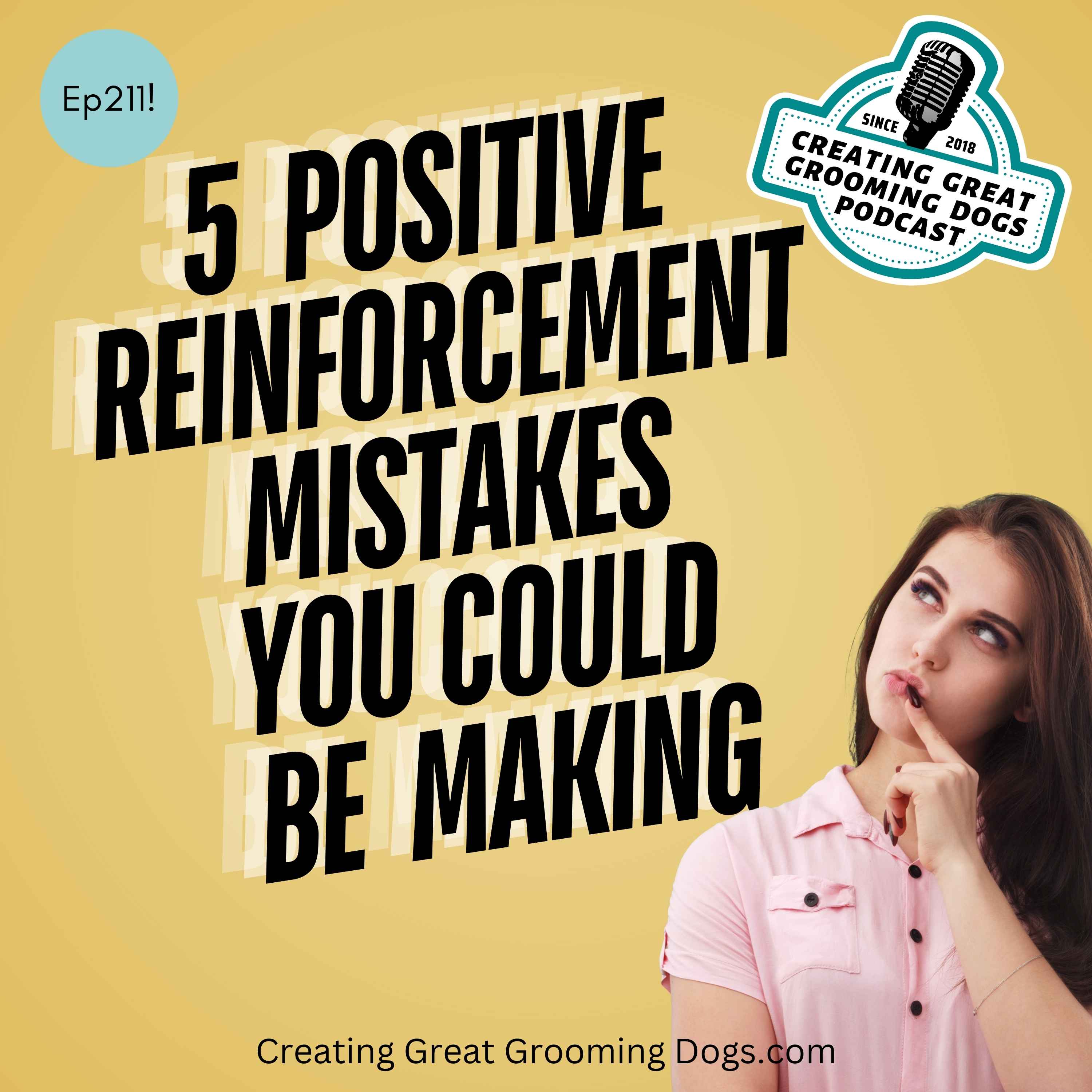5 Positive Reinforcement Mistakes You Might Be Making

5 Positive Reinforcement Mistakes You Might Be Making
By Chrissy Neumyer-Smith, MGBS, MCS, MCGE, CPG, CBCC-KA, CPDT-KA, FFCP
Positive reinforcement is one of the most useful tools we have for helping pets learn to enjoy grooming. It builds trust, confidence, and cooperation. But it’s often misunderstood. I see a lot of well-meaning people using food or praise and calling it “positive reinforcement,” but that’s not always what’s really happening.
Let’s take a closer look at five common mistakes.
1. Thinking that using food automatically means using positive reinforcement.
Here’s a big one. Using food doesn’t always mean you’re using positive reinforcement. Food is just one tool—and it can be used in lots of different ways.
If you’re using food to distract a dog while you clip nails or brush, that’s not positive reinforcement. It’s a distraction. There’s nothing wrong with using a distraction, as long as the pet knows what’s happening and isn’t being tricked. But when we sneak something past them, it often backfires. Nobody likes being surprised, and pets are no different.
Positive reinforcement happens when the pet performs a behavior you like, and you then add something pleasant afterward. The behavior triggers the reward. Something added(positive) to encourage the behavior the pet did(Reinforce). It's a specific process.
2. Believing that positive reinforcement always means food.
The “positive” in positive reinforcement doesn’t mean happy or kind—it means added. It’s the plus sign(+). So the thing you add could be a treat, praise, petting, or play.
In grooming, we work with many pets who are nervous or overstimulated, and those dogs might not take treats at all. That doesn’t mean you can’t use positive reinforcement—it just means you have to get creative.
3. Forgetting that the pet decides what’s rewarding.
This is one I remind people of constantly: you don’t get to decide what’s rewarding—the pet does.
If you hand me a piece of black licorice, I’m going to feel rewarded. I like licorice. If you hate licorice, you may feel punished. I've added something unpleasant to you. The same goes for dogs, cats, or any other animal we’re working with. What feels rewarding depends entirely on that individual.
A big, rough “good boy!” pat might be perfect for a large dog who loves roughhousing but completely overwhelming for a tiny, shy dog. The only way to know is to pay attention to how that animal responds. If the behavior you like isn’t increasing or staying the same, your reward may not be something the pet finds pleasant.
4. Reinforcing at the wrong time—or not at all.
Timing is everything. If you wait too long to give the reward, the pet might not make the connection. They won’t know which behavior earned the treat or the praise.
You may want to use a “reward marker” like “yes!” or “good.” It tells the pet right there in that moment that they did the right thing. Then your treat or praise follows. It makes the connection clear—and clear communication is what training really comes down to.
When positive reinforcement is working, you’ll notice the behavior happening more often. If it’s not, check your timing, your marker, or your choice of reward.
5. Trying to use positive reinforcement when the pet is already stressed.
Here’s a common one in grooming. Once a dog is panicking, flailing, or growling, it’s too late to reinforce calm behavior—they’re not thinking, they’re reacting.
That’s not the time to keep pushing through. They should never reach this point. If they do, that’s when we stop, help them calm down, and start again at a level they can handle. The goal is to find their comfort zone and slowly expand it. That’s how we build trust. You can’t reinforce calm behavior if the pet isn’t calm enough to learn.
Wrapping It All Up
Positive reinforcement isn’t about cookies—it’s about communication. It’s about understanding what motivates the animal in front of you and using that to help them feel comfortable, confident, and cooperative.
When we use it well, grooming becomes more than just getting the job done—it becomes a partnership. We’re teaching pets to trust us and to enjoy the process. And that’s the kind of grooming experience that lasts.
















 My Classes
My Classes
